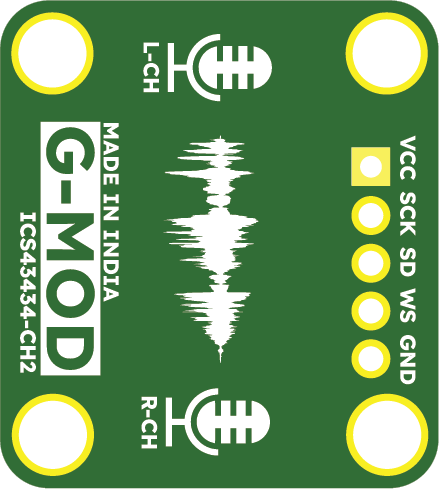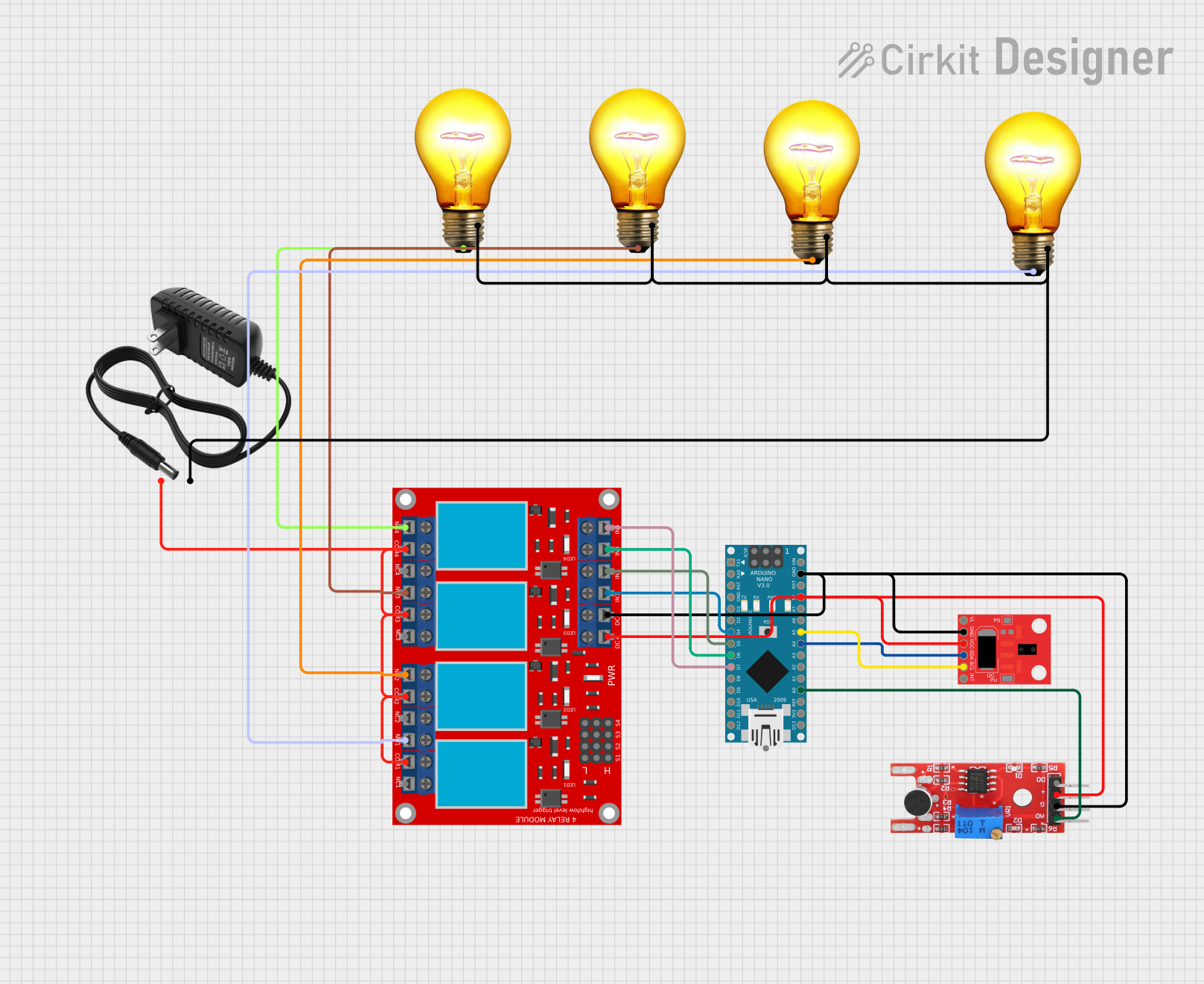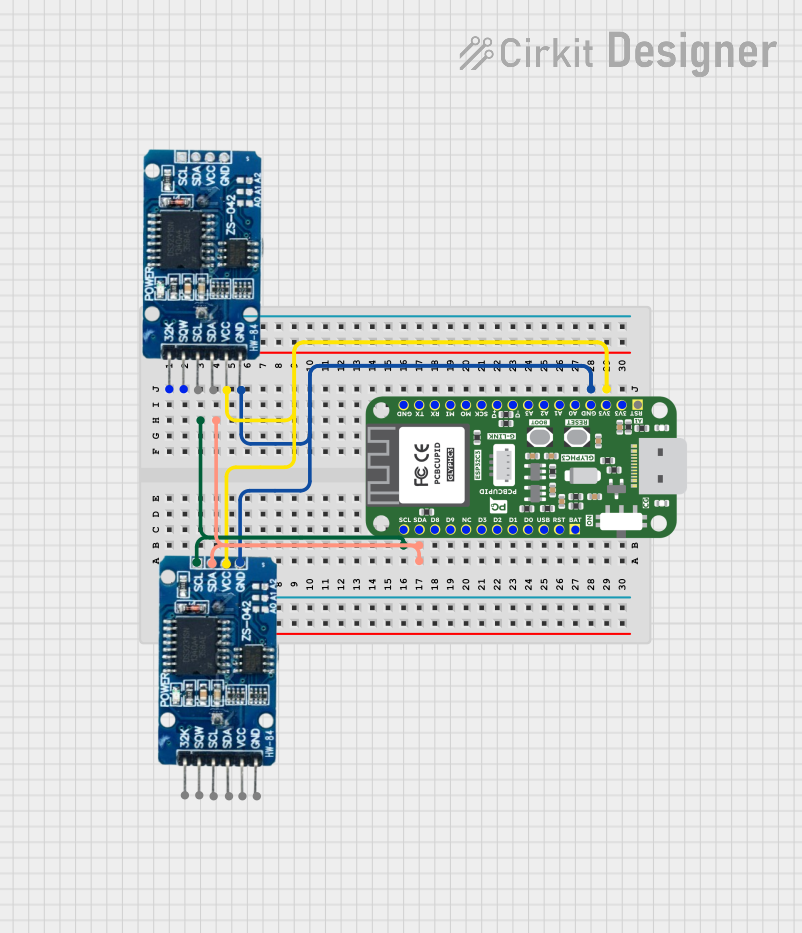
How to Use GLYPHSENSE-ICS43434-2CH: Examples, Pinouts, and Specs

 Design with GLYPHSENSE-ICS43434-2CH in Cirkit Designer
Design with GLYPHSENSE-ICS43434-2CH in Cirkit DesignerIntroduction
The GLYPHSENSE-ICS43434-2CH (Manufacturer Part ID: GS-004) is a high-performance, low-noise microphone array integrated circuit designed by PCBCUPID. This component features two channels for stereo sound capture and advanced signal processing capabilities, making it ideal for applications requiring high-quality audio input.
Explore Projects Built with GLYPHSENSE-ICS43434-2CH

 Open Project in Cirkit Designer
Open Project in Cirkit Designer
 Open Project in Cirkit Designer
Open Project in Cirkit Designer
 Open Project in Cirkit Designer
Open Project in Cirkit Designer
 Open Project in Cirkit Designer
Open Project in Cirkit DesignerExplore Projects Built with GLYPHSENSE-ICS43434-2CH

 Open Project in Cirkit Designer
Open Project in Cirkit Designer
 Open Project in Cirkit Designer
Open Project in Cirkit Designer
 Open Project in Cirkit Designer
Open Project in Cirkit Designer
 Open Project in Cirkit Designer
Open Project in Cirkit DesignerCommon Applications and Use Cases
- Voice recognition systems
- Smart home devices (e.g., smart speakers, voice assistants)
- Audio recording equipment
- Noise-canceling systems
- IoT devices with audio input capabilities
Technical Specifications
The following table outlines the key technical details of the GLYPHSENSE-ICS43434-2CH:
| Parameter | Value |
|---|---|
| Supply Voltage (VDD) | 1.8V to 3.3V |
| Operating Current | 1.5 mA (typical) |
| Signal-to-Noise Ratio | 65 dB |
| Frequency Response | 20 Hz to 20 kHz |
| Output Format | Pulse Density Modulation (PDM) |
| Number of Channels | 2 (Stereo) |
| Operating Temperature | -40°C to +85°C |
| Package Type | LGA-10 (3.5 mm x 2.65 mm x 0.98 mm) |
Pin Configuration and Descriptions
The GLYPHSENSE-ICS43434-2CH has a 10-pin LGA package. The pin configuration is as follows:
| Pin Number | Pin Name | Description |
|---|---|---|
| 1 | VDD | Power supply input (1.8V to 3.3V). |
| 2 | GND | Ground connection. |
| 3 | CLK | Clock input for PDM signal. |
| 4 | DATA | PDM data output. |
| 5 | LRSEL | Left/Right channel select. |
| 6 | NC | No connection (leave unconnected). |
| 7 | VDD | Power supply input (redundant pin). |
| 8 | GND | Ground connection (redundant pin). |
| 9 | TEST | Factory test pin (leave unconnected). |
| 10 | NC | No connection (leave unconnected). |
Usage Instructions
How to Use the Component in a Circuit
- Power Supply: Connect the VDD pin to a stable power source (1.8V to 3.3V) and the GND pin to ground.
- Clock Signal: Provide a clock signal (typically 1-3 MHz) to the CLK pin. This clock drives the PDM output.
- Data Output: Connect the DATA pin to a microcontroller or DSP capable of processing PDM signals.
- Channel Selection: Use the LRSEL pin to select the channel:
- Logic HIGH: Right channel
- Logic LOW: Left channel
- Unused Pins: Leave the NC and TEST pins unconnected.
Important Considerations and Best Practices
- Decoupling Capacitors: Place a 0.1 µF ceramic capacitor close to the VDD pin to reduce power supply noise.
- Clock Stability: Ensure the clock signal is stable and within the specified frequency range for optimal performance.
- PCB Layout: Minimize trace lengths for the CLK and DATA lines to reduce noise and signal degradation.
- Microphone Placement: For best results, position the microphone array in a location free from obstructions and away from noise sources.
Example: Connecting to an Arduino UNO
The GLYPHSENSE-ICS43434-2CH can be interfaced with an Arduino UNO for audio processing. Below is an example of how to connect and use the component:
Circuit Connections
| GLYPHSENSE Pin | Arduino Pin |
|---|---|
| VDD | 3.3V |
| GND | GND |
| CLK | D3 (PWM pin) |
| DATA | D2 |
| LRSEL | GND (Left) |
Arduino Code Example
// Example code for interfacing GLYPHSENSE-ICS43434-2CH with Arduino UNO
// This code captures PDM data and processes it for basic audio analysis.
#include <PDM.h> // Include PDM library for handling PDM signals
// Define PDM pins
#define PDM_CLK_PIN 3
#define PDM_DATA_PIN 2
// Buffer to store PDM data
#define BUFFER_SIZE 256
int16_t pdmBuffer[BUFFER_SIZE];
// Callback function to handle incoming PDM data
void onPDMData() {
// Read PDM data into the buffer
int bytesAvailable = PDM.available();
PDM.read(pdmBuffer, bytesAvailable);
// Process the PDM data (e.g., convert to PCM or analyze)
// Add your audio processing code here
}
void setup() {
// Initialize serial communication for debugging
Serial.begin(9600);
while (!Serial);
// Configure PDM library
if (!PDM.begin(1, 16000)) { // Mono mode, 16 kHz sample rate
Serial.println("Failed to initialize PDM!");
while (1);
}
// Set the PDM callback function
PDM.onReceive(onPDMData);
Serial.println("PDM initialized successfully.");
}
void loop() {
// Main loop does nothing; PDM data is handled in the callback
}
Troubleshooting and FAQs
Common Issues and Solutions
No Output from the Microphone
- Cause: Incorrect power supply or clock signal.
- Solution: Verify that the VDD pin is receiving the correct voltage and the CLK pin has a stable clock signal.
Distorted Audio
- Cause: Noise on the power supply or improper PCB layout.
- Solution: Add decoupling capacitors near the VDD pin and ensure proper grounding.
Microphone Not Responding to Channel Selection
- Cause: Incorrect logic level on the LRSEL pin.
- Solution: Check the voltage level on the LRSEL pin and ensure it matches the desired channel.
PDM Data Not Recognized by Microcontroller
- Cause: Incorrect clock frequency or data pin connection.
- Solution: Verify the clock frequency and ensure the DATA pin is connected to the correct microcontroller pin.
FAQs
Q: Can I use this component with a 5V power supply?
A: No, the maximum supply voltage is 3.3V. Using a 5V supply may damage the component.Q: What is the maximum distance between the microphone and the microcontroller?
A: Keep the distance as short as possible (preferably under 10 cm) to minimize signal degradation.Q: Can I use this component for mono audio applications?
A: Yes, you can use only one channel by setting the LRSEL pin to the desired channel and leaving the other channel unconnected.Q: Is the component compatible with Raspberry Pi?
A: Yes, the GLYPHSENSE-ICS43434-2CH can be interfaced with Raspberry Pi using its I2S interface for PDM data processing.